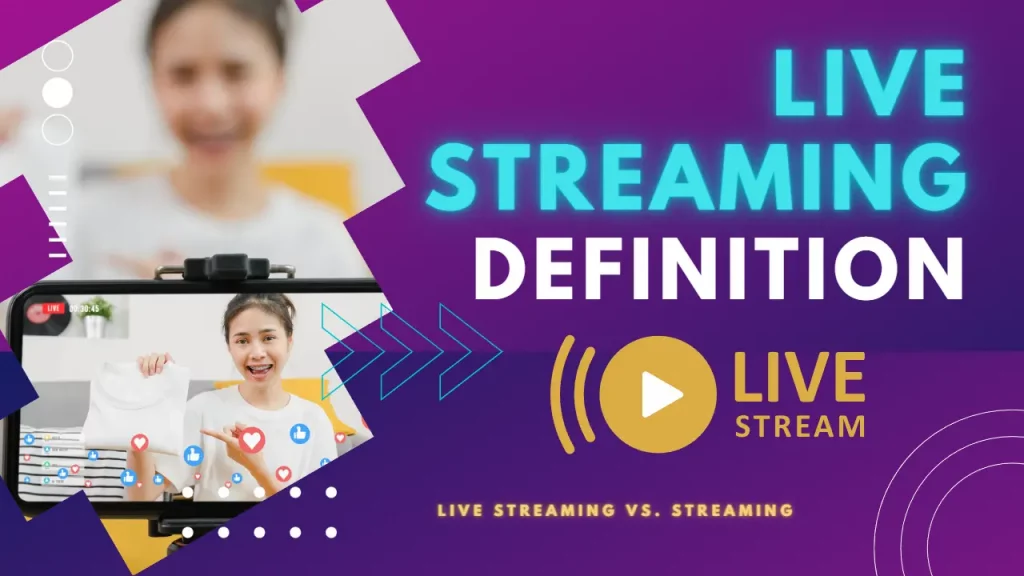Live streaming is an emerging technology that is revolutionizing the way content is consumed and shared. As more people turn to live streaming as a means of engaging with their audience, this technology has the potential to become an even more powerful tool for content creators.

Live streaming is becoming increasingly popular due to the advancement of technology and the accessibility of high-speed internet. It has become a common way for individuals and businesses to broadcast live events, lectures, and other forms of media.
In this article, we will explore the basics of live streaming and discuss the benefits of this technology.
Table of Contents
What is Live Streaming?
Live streaming is a technology that enables users to view or broadcast live video and audio content in real-time over the internet. It is an easily accessible technology, allowing users to connect with their audience in a simple yet powerful way. Live streaming allows users to interact with their viewers in real-time, making it an ideal platform for broadcasting content in various forms including online gaming, sports, news, events, and entertainment. With live streaming, users can create a unique viewing experience for their viewers that is both engaging and entertaining.
Live streaming is an effective way to interact with a larger audience base, increasing the reach of your content. This technology allows viewers to watch content as it happens and allows users to respond to comments, questions, and feedback in real time. As a result, it can be an effective tool for building relationships with viewers, creating meaningful connections, and engaging with potential customers. Live streaming is also a great way to share knowledge, providing viewers with valuable information and insights.
Live streaming is made possible by the use of a streaming server and a client device. The streaming server encodes audio and video content into a streamable format, which is then sent to a client device, such as a computer, smartphone, or smart TV. The client device decodes the stream and displays the content.
Live streaming differs from traditional streaming in that it is real-time, meaning that the content is broadcast as it happens. This means that viewers are able to watch content as it is being created. This is in contrast to traditional streaming, which requires content to be stored on a server, which must then be accessed by the viewer.
Live Streaming Platforms
There are a variety of live streaming platforms available. These platforms provide the infrastructure necessary to stream audio and video content. Popular platforms include YouTube Live, Twitch, and Facebook Live.
- YouTube Live is a live streaming platform owned by Google that allows users to stream content to viewers around the world. It allows users to broadcast live events and other content to viewers. It also offers a variety of features, such as the ability to save and edit videos, as well as monetization options.
- Twitch is a live streaming platform owned by Amazon that focuses on gaming-related content. It allows users to create channels and stream their gaming sessions to viewers. It also offers features such as chat rooms, the ability to follow and subscribe to channels, and a variety of monetization options.
- Facebook Live is a live streaming platform owned by Facebook that allows users to broadcast live videos to their friends and followers. It provides a variety of features, such as the ability to save and edit videos, as well as monetization options.
Benefits of Live Streaming
Live streaming provides many opportunities and benefits for businesses, organizations, and individuals alike.
- For starters, it’s a great way to reach a larger audience, as it can be viewed anywhere with an internet connection. It can also be used for educational purposes, such as teaching classes or hosting webinars, which can reach people from all around the world.
- Live streaming can provide an excellent platform for content creators to reach their fans. For example, many musicians have used it to host live performances, allowing their audience to tune in from anywhere. It also provides an effective marketing tool for businesses, allowing them to reach a larger demographic and engage with their customers in real-time.
- Live streaming is a great way to save time and money, as it eliminates the need for physical events or conferences. This can save businesses and organizations money in costs such as travel expenses and venue rentals. Live streaming also allows businesses to reach a larger audience. Furthermore, it allows participants to attend remotely, reducing time lost in commute and maximizing participation.
Streaming vs Live Streaming
Streaming and live streaming are two popular methods of consuming media content. Streaming is the process of watching or listening to media content that is stored on a remote server, such as a video or music file. Live streaming is the process of watching or listening to content that is broadcast in real-time over the internet.
- The main difference between streaming and live streaming is that streaming requires content to be stored on a server, while live streaming allows content to be broadcast in real-time. Streaming allows viewers to access stored content on-demand, while live streaming allows viewers to watch content as it is being created. This means that there may be a delay between the broadcast and when the content is available to the viewer or listener.
- Another difference between streaming and live streaming is the type of content that can be broadcast. Traditional streaming is typically used to stream pre-recorded content, while live streaming is used to stream content in real-time. This means that live streaming is often used to broadcast live events, lectures, and other forms of media.


